The frenzy of mid-to-late summer, as the harvests start to roll in, is always a doozy. One second, you’re jumping for joy at your first eggplant, the next, you have a bin full of peppers you’re unsure what to do with. But what if I told you that you could avoid the mad rush by harvesting earlier and later while growing more? Let me introduce to you succession planting!
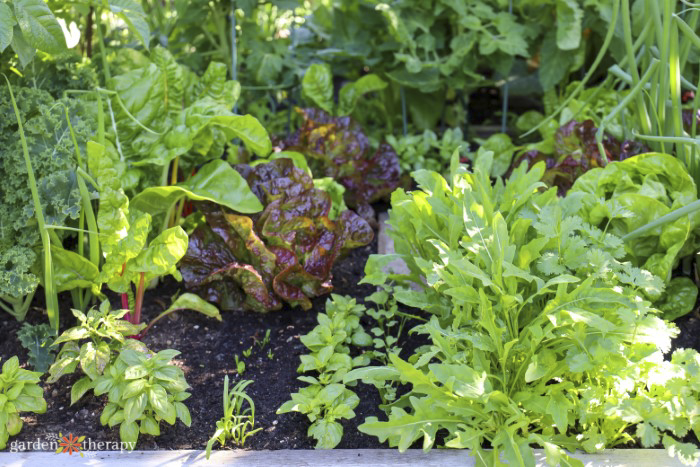
For the longest time, I always thought of succession planting in the simplest form: gardeners can space out the timing of their planting so that their plants mature at different times.
But then I saw a talk by Meg McAndrews Cowden about her book, Plant Grow Harvest Repeat: Grow a Bounty of Vegetables, Fruits, and Flowers by Mastering the Art of Succession Planting.
At first, I thought, how could you write a whole book on succession planting? But with a background in natural resource management, Meg has a unique take on succession and how it also applies to generations of plants.
So, I want to share a little bit more about what exactly succession planting is and how you can master it in your own garden with the help of Meg.
PLUS, make sure to read all the way to the end to see how you can win a copy of Meg’s book and my own for yourself.
This post will cover…
- Expert Tips for Succession Planting
- What is Succession Planting?
- Succession Planting in Practice
- The Juicy Benefits of Succession Planting
- How to Succession Plant
- Continuous Planting
- Variety
- Blocking
- Endurance
- Zone Bending
- Interplanting
- Staggering Harvest
- Vertical Gardening
- Edible Perennials
- What Crops Are Good for Succession Planting?
- Free Printable Succession Planting Chart
- Frequently Asked Questions About Succession Planting
- Win a Copy of Plant Grow Harvest Repeat!
- More Gardening Ideas
Reprinted with permission from Plant Grow Harvest Repeat: Grow a Bounty of Vegetables, Fruits, and Flowers by Mastering the Art of Succession Planting by Meg McAndrews Cowden © 2022. Published by Timber Press, Inc.
Expert Tips for Succession Planting
- Plan your planting times to stagger when different plants mature throughout the growing season and have fresh vegetables for longer.
- Grow different varieties of the same vegetable to help with different harvesting times.
- Continuously start new seeds beyond the spring to extend the harvesting season.
- Use frost protection to allow you to begin seeds earlier and protect plants later in the fall.
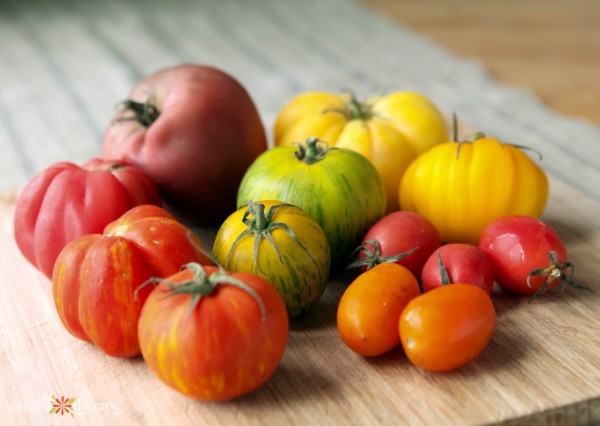
What is Succession Planting?
My original take on succession planting remains true, albeit a simpler version. Here’s how Meg describes it: “In the simplest terms, succession means one follows another. In ecology, succession describes how plant communities develop over time, with different groups of plants succeeding one another.”
This means succession planting can occur in one season within your annuals and vegetables or over many years in how your trees, shrubs, and perennials grow.

Succession Planting in Practice
A forest is a great example of succession planting. The younger trees grow larger, eventually becoming overstory trees. As a wildfire comes or a large tree dies, it will fall down and then open up more sunlight to the ground cover plants. This then stimulates new growth, creating a constant cycle of succession.
Another wonderful example is weed seeds. I often refer to the weed bank, which is the store of seeds in our soil that can be dormant in our garden for 25 or more years. As soon as the conditions are appropriate, they grow. They’ll germinate at the right time, filling in patches of soil.
So as you can see, succession planting has multiple components. In The Regenerative Garden, I talk about polyculture gardens, and succession planting is a big part of how we cultivate those.
Planting vegetables ready for harvest at different times, succession planting, and sowing multiple varieties of each vegetable are all part of growing a polyculture garden.
You also see it in food forests and guilds. Some fruit and plants will mature in 5-6 years, while others might be ready a year after planting. All the plants continue to develop in not just one growing season but in a succession of time.
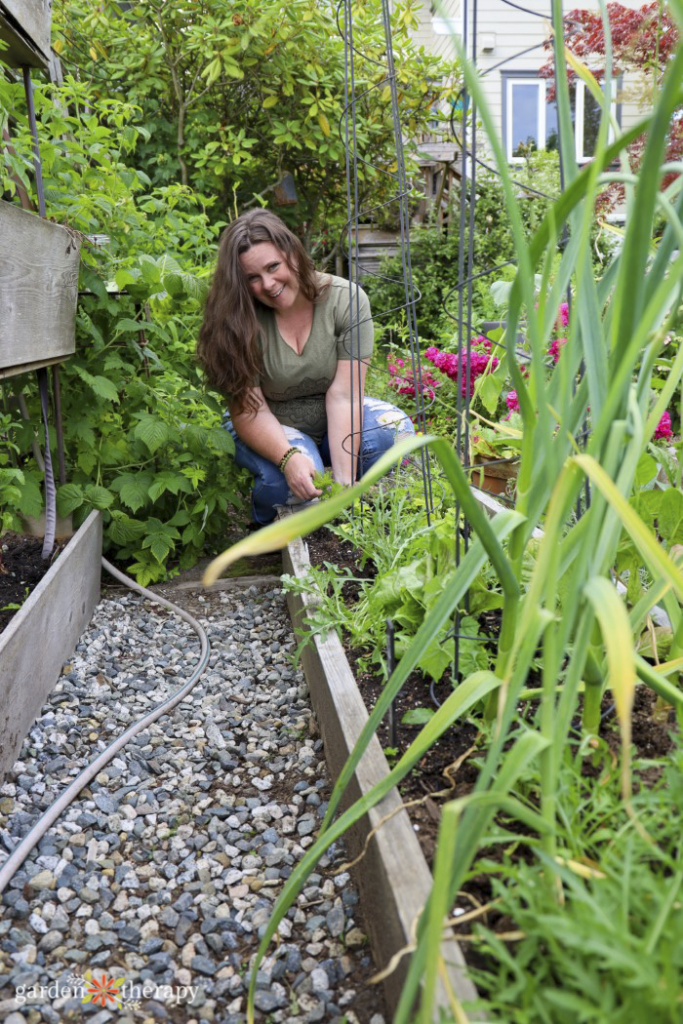
The Juicy Benefits of Succession Planting
Okay, but why would you want all the extra effort of planning a succession garden? Well, let me give you a firsthand example.
A few years ago, I watched my new neighbours move in across the street from me. They built a new garden full of vegetables. After a couple of months of growing, ALL those vegetables came into maturity simultaneously.
I watched as suddenly they had buckets of beets and arms of kale and more vegetables than any couple could know what to do with. Watching it was a great example of why succession planting is so valuable, so I always ensure I plant things so they mature at different times as well.
“Succession gardening will increase your garden’s productivity by maximizing the days of your growing season, even if those days are limited, and maximizing your space, even if your garden is small,” says Meg.
Rather than rushing to harvest everything in a couple of months, what if you could harvest food for a whole eight months? Or dare I say it, even the whole year long? “[This could possibly] meet your food needs, reduce seasonal overwhelm, create a more robust local food system, and thus feed you more completely,” says Meg.
And it’s not just you who will benefit. This also gives an opportunity for the local wildlife to have an extended season. You can help feed bees who wake up early and need flowers to energize themselves or birds who linger longer than normal in the fall due to rising temperatures.

How to Succession Plant
Now that you’re on board with the idea, there are many aspects to consider when succession planting. With a little planning, it’s not hard to do in any kind of space or garden.
Continuous Planting
Continuous planting is the idea that there is no planting season; it’s an ongoing part of your garden. “Grasping the notion that a garden is never fully planted is key to embracing the concept of continuous planting,” says Meg.
So while spring can be busy, so can the summer and fall for planting.

Variety
Why not grow a few varieties of the same vegetable? If you have some favourites, you can actually help to stagger their harvest times just by choosing a different variety.
“Planting a few different varieties of the same vegetable (or fruit, for that matter) with various maturation dates is the simplest way to implement staggered succession planting,” says Meg.
Tomatoes are a great example of this. From cherry to beef steak, you can extend the harvesting time by a month or more just by planting a few varieties rather than focusing your efforts on one.
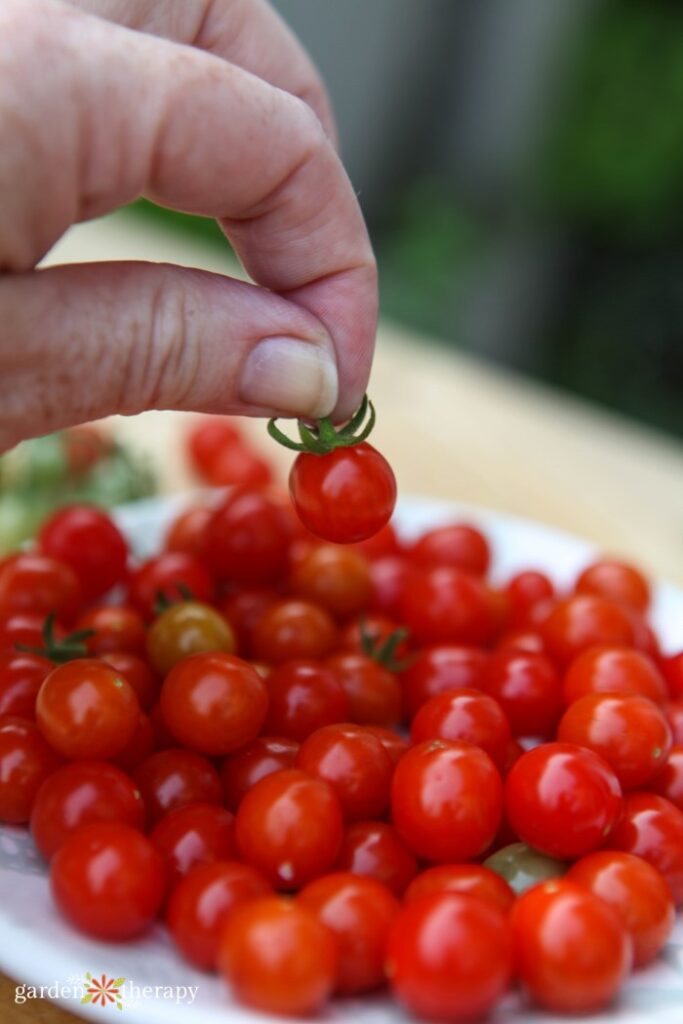
Blocking
Blocking is typically seen in large-scale agriculture. Think of neat and tidy rows of crops and vegetables. This can actually help maximize space and keep track of all your harvests.
Endurance
I don’t think endurance gets spoken of enough, and I love that Meg points it out as an integral part of succession planting. As she says, “Seed starting is a marathon, not a sprint.”
You want to plan so your plants grow and produce for as long as possible, especially if you live in a place with a shorter growing season. So plan ahead, and ensure you and your plants can keep up with the planting.

Zone Bending
Zones can be a useful tool to help us determine what can grow, but we all have unique microclimates that can make it harder to predict exactly how things will go when you plant them.
Frost dates are very irregular, especially with changing climates. But you can use frost protectors, greenhouses, and even grow lights to help begin your season early and extend it late.
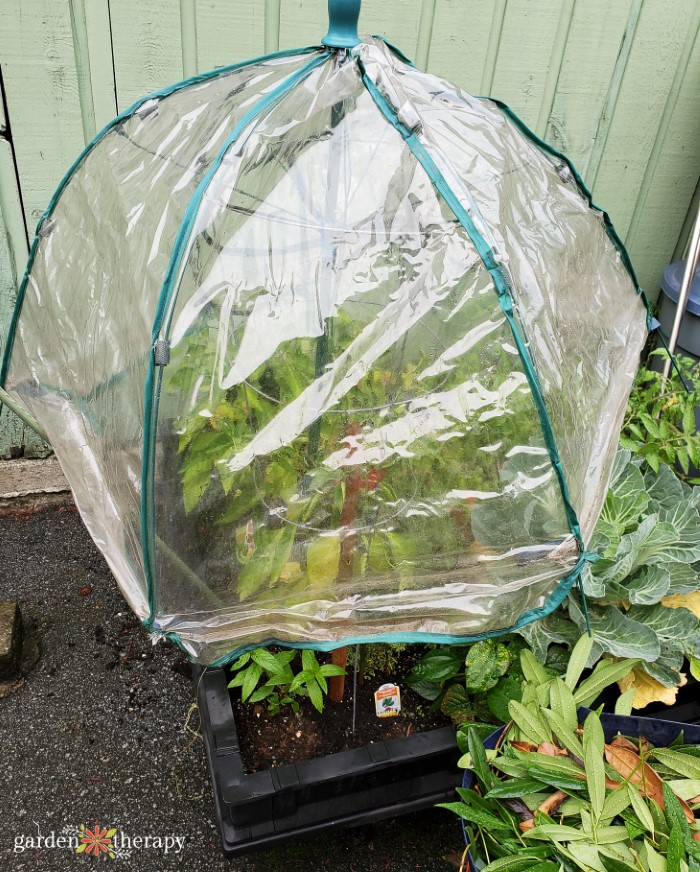
Interplanting
Interplanting is a big one when it comes to succession planting. “This means growing more than one type of vegetable or flower simultaneously in the same proximity,” says Meg. “Also called intercropping, and sometimes referred to as companion planting, this mingling of more than one type of plant in a space creates a living mosaic—quite literally a garden salad.”
Not only does this maximize space, but it can allow plants to help each other. One tall plant may provide shade for a lower plant, or one flower may prevent pests from feasting on another plant. It also can stop weeds from growing by taking up any empty space.
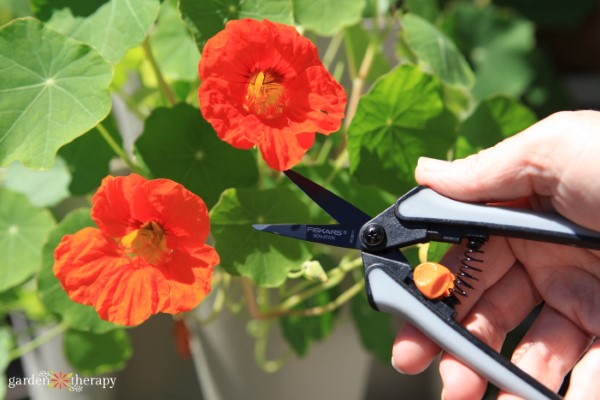
Staggering Harvest
This is the one that succession planting is known for. This is where you make sure that not everything harvests at the same time. For example, you will want to ensure that not all your tomato plants need harvesting at once but also that other plants in the garden aren’t also reaching maturity at the same time.
Meg notes, “Considering the maturation rates of plants paired together is part of the equation, as well as ensuring appropriate light levels remain throughout the duration of each plant’s lifecycle.” In other words, ensure the plants get the right conditions to harvest as planned.
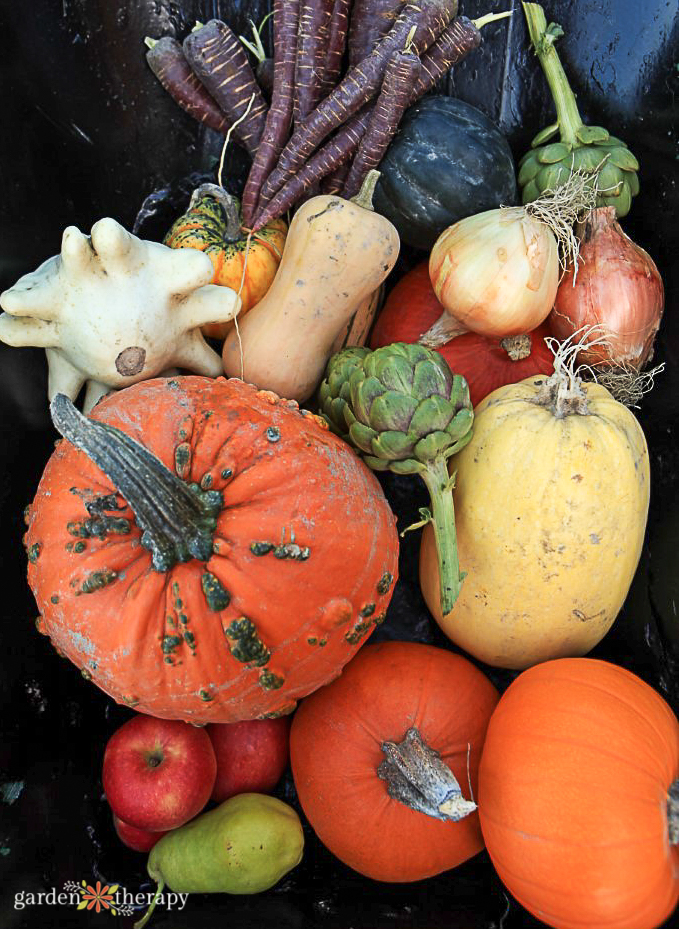
Vertical Gardening
Vertical gardening is a great way to make use of small space. It was how I managed to grow some vegetables in the small sliver of sun my old garden used to have.
“Take a look at natural landscapes, and you’ll quickly notice vines ascending trees, shrubs interluding in opportune gaps in otherwise dense forests, and other plants growing upward for sunlight in creative ways,” says Meg.
Grow vertical plants like tomatoes and vines like cucumbers or beans. Also, use space upwards and get creative with your growing space.
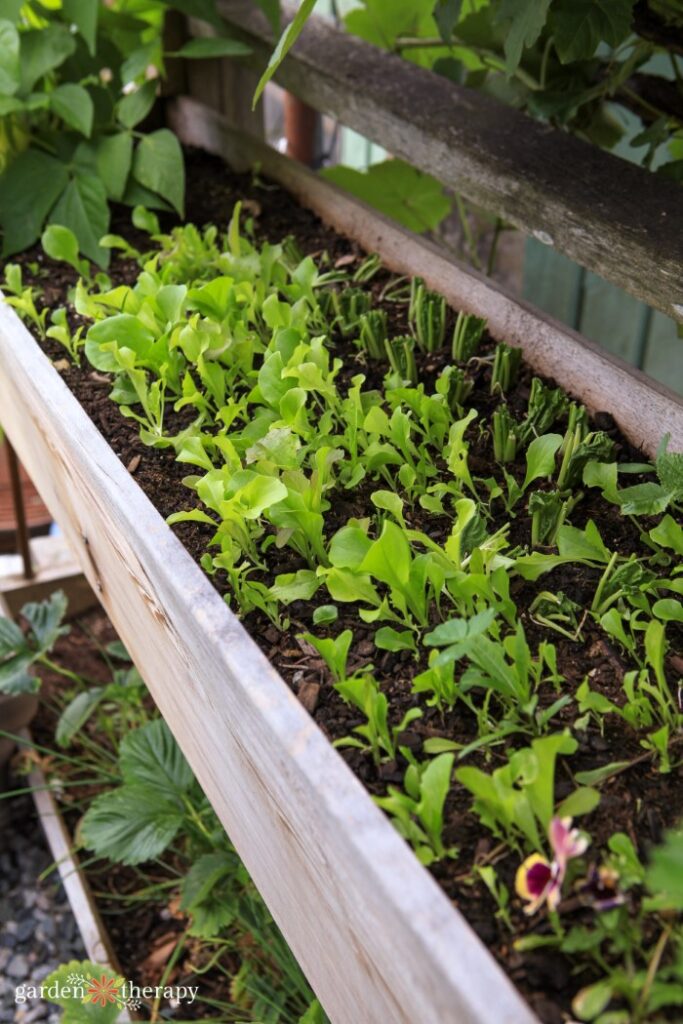
Edible Perennials
If you want to have lots of edible food, don’t discount the value of perennials. Not only will this lower the amount of maintenance you need to put in each year, but it will also help foster a more resilient garden. Plant fruit trees, native edible trees and shrubs, berries, and perennial vegetables.
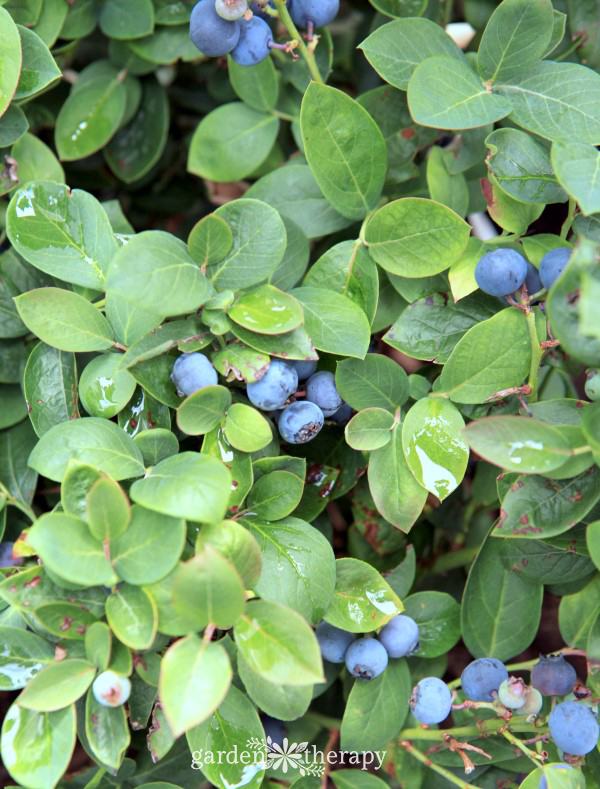
What Crops Are Good for Succession Planting?
Luckily, you can apply succession planting to most of your favourite vegetables and edible plants. As long as it doesn’t have a long and set growing period (like garlic, for example) you can probably plant to succession plant with most of your edible plants.
Meg’s a succession planning pro, and here’s a handy succession planting chart based on her recommendations. Utilize these early start times, and continue planting routinely until the last planting date.
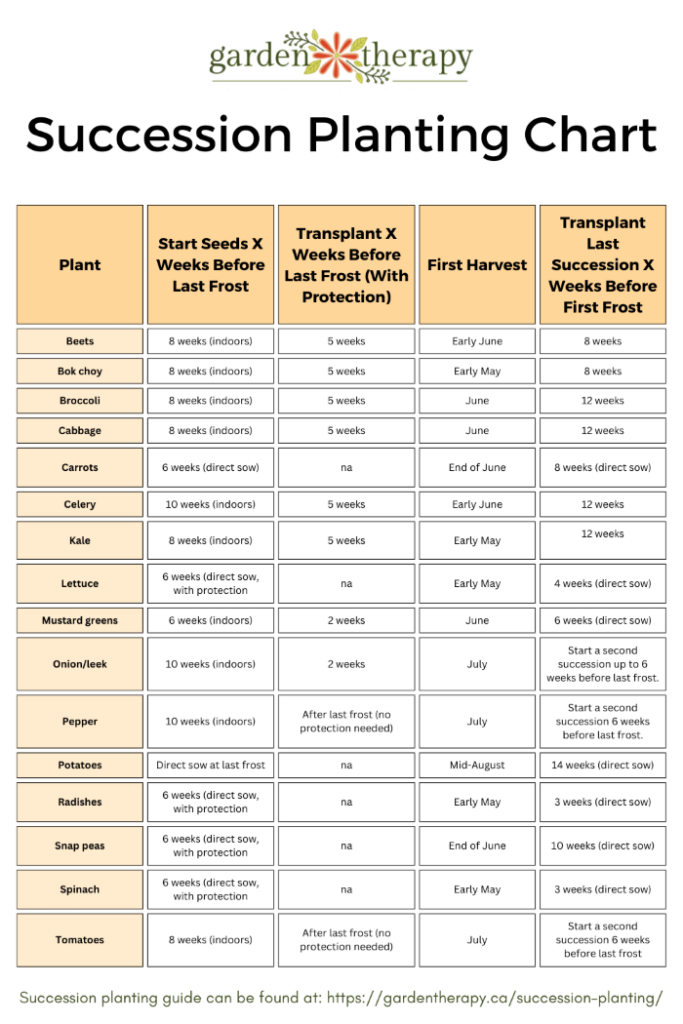
*With protection is any kind of frost protection, such as cold frames or tunnel hoops. Keep protected until after the last frost.
**Soil should reach a minimum temperature of 50°F/10°C at 6 inches down before planting outside.
Free Printable Succession Planting Chart
If you’re ready to plan your succession garden, download my free succession planting chart printable! It includes a print-friendly version of the chart above, as well as a succession planting worksheet you can use to fill out and plan your own veggie garden.
Download the Free Succussion Planting Chart Here
Frequently Asked Questions About Succession Planting
Absolutely. Flowers are great for interplanting, attracting pollinators for your vegetable plants and predators for pests. Then, you can enjoy their beauty while they also provide a host of benefits to your garden. You can even plant edible flowers, so they’re playing double duty.
I always aim to have flowers blooming as early and as late as possible to help out my early and late wildlife. Meg’s favourites for succession planting are cosmos, zinnia, marigold, sunflower, and calendula.
Tomatoes are often one plant that provides a big harvest at the same time. Before the tomatoes are planted outside, you could grow some speedy spring vegetables to take their spot before they’re ready for transplanting.
Start your tomatoes as early as February 1 or as late as April 1. If you start them early in February, they will get pretty big before they can go outside, but you will get an earlier harvest.
Typically, you can sow them six weeks before the last frost, transplant them just after the last frost, and harvest from July to September.
Make sure to harvest all the tomatoes 2-3 weeks before the last frost. Then, you can plant quick-growing fall vegetables or even your garlic for next year in their place. Also, be sure to grow different varieties of tomatoes to help with varying maturity times.
Cucumbers are great for succession planting. First, begin sowing your cucumbers indoors in May, transplant them outside in early June, and then you can harvest these from mid-July to August.
Then, sow another round 12 weeks before the first frost (end of June), transplant them outside 4 weeks later, and then you should be able to harvest them in September or about 4 weeks before the first frost.
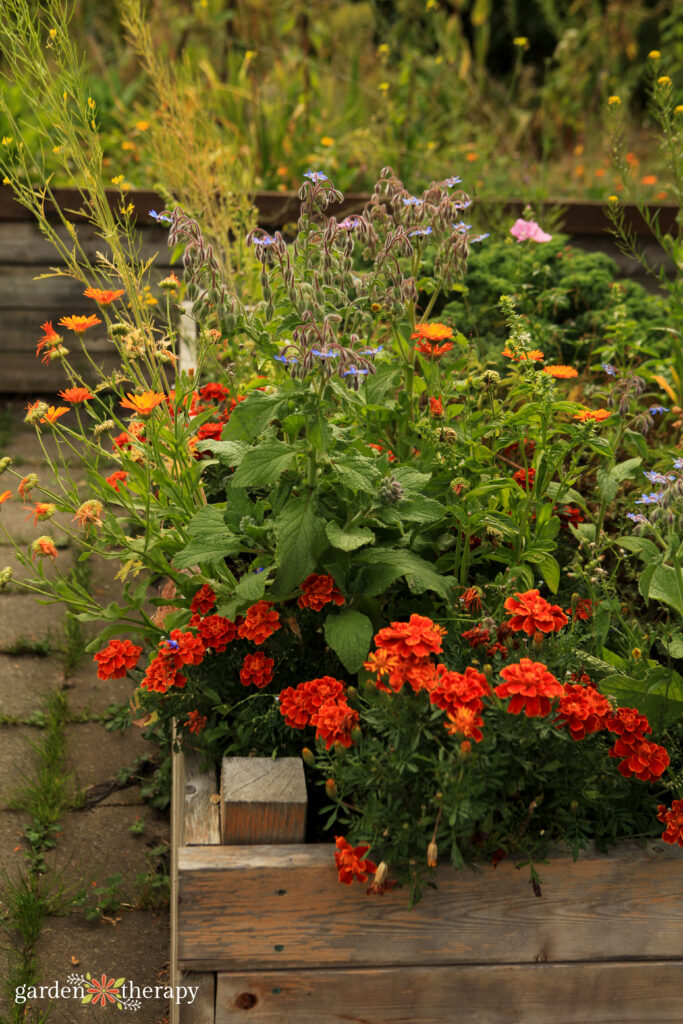
Win a Copy of Plant Grow Harvest Repeat!
Want a copy of Plant Grow Harvest Repeat? I’m giving away one copy of Meg’s book, along with my book, The Regenerative Garden, to one lucky Garden Therapy winner.
You can enter one of 3 ways. Enter on all three platforms to increase your chances of winning!
- Leaving a comment on the blog.
- Dropping a comment on this Instagram post.
- Commenting on this Facebook post.
This contest is open to those in the continental USA online. The contest closes on May 4, 2023, where I will use a random number generator to select the winner.

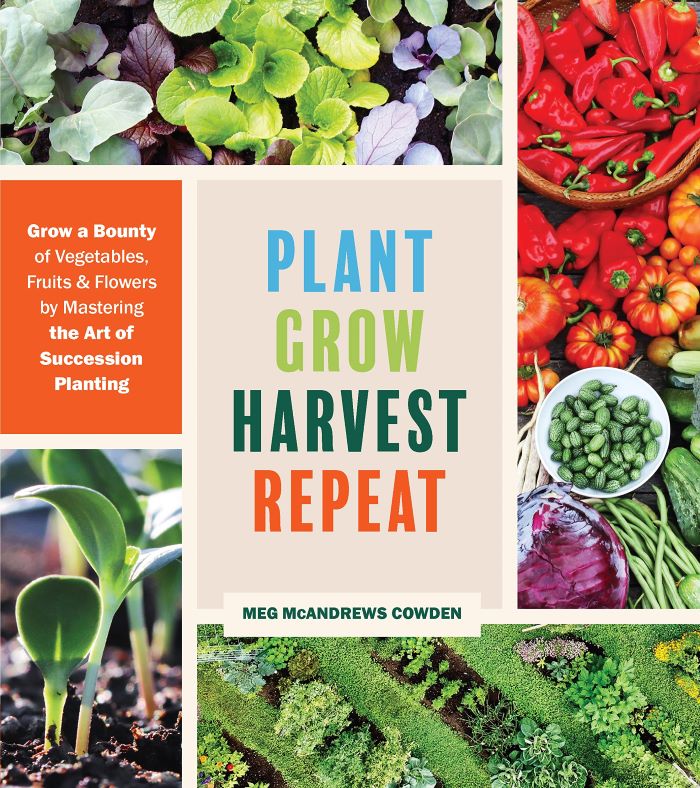
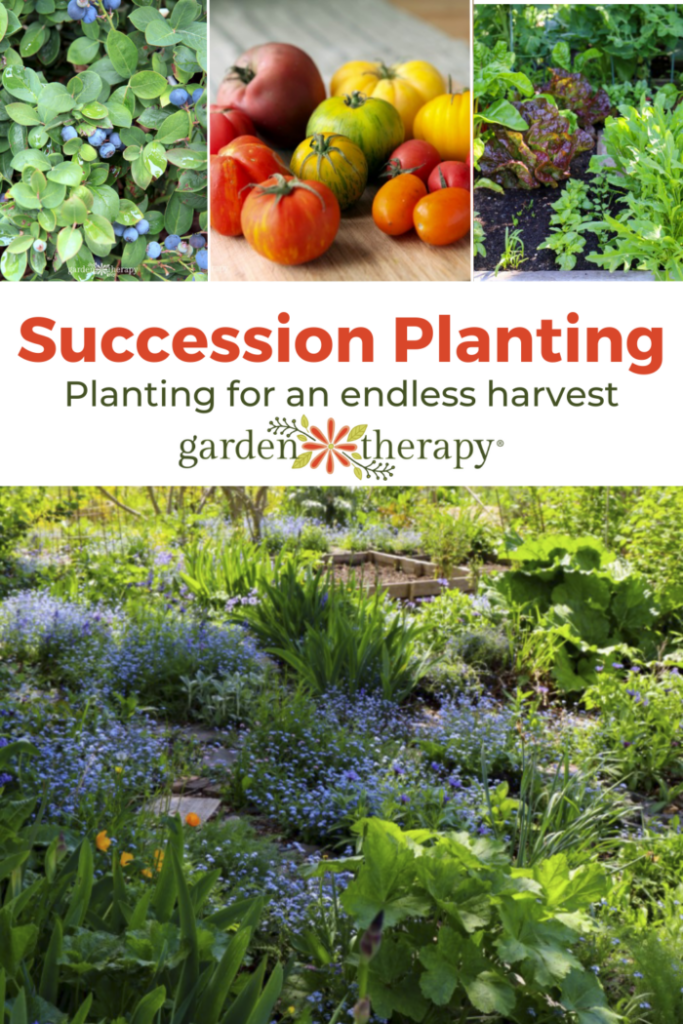



This is the first year that I’m giving this a try; since I’m starting small, the planning wasn’t as hard as I thought and I’m excited to see what the summer and fall bring!
Yes. I love this too. I’m going to make that a plan for me. Space out my timeline!
Great article! Thanks for all the info!
Thank you for the wonderful information! Bookmarking!
I love this idea, actually I enjoy all of your posts. I have learned so much and looking forward to learning even more. Thank you!!!